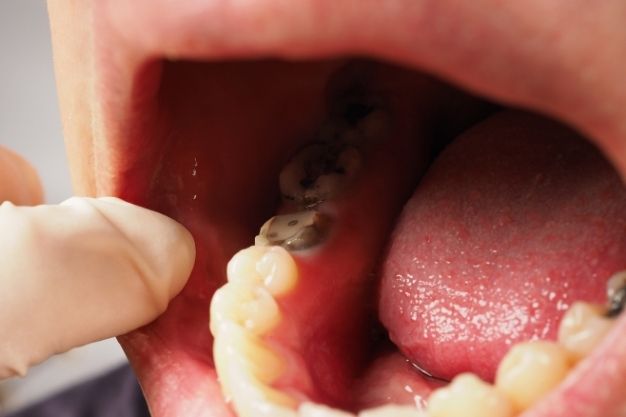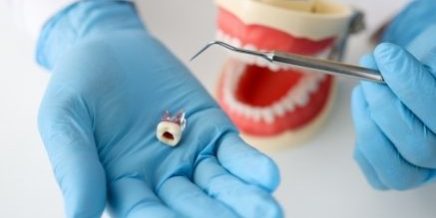“Have you been advised by your dentist or endodontist that you require a root canal?”
If that’s the case, you’re not alone!
More than 15 million teeth are repaired and saved via a root canal or endodontic therapy each year. This page goes into depth about root canal on crowned tooth therapy and how it may reduce tooth discomfort and save your smile.
The Greek word for “within” is “endo,” while the Greek word for “tooth” is “odont.” Endodontic therapy is used to treat the interior of the tooth. Endodontic treatment includes root canal therapy.
It helps to comprehend endodontic therapy if you understand the tooth’s anatomy. The pulp is a soft tissue found inside the tooth, underneath the white enamel and the dentin’s hard layer. During tooth development, the pulp contains blood vessels, nerves, and connective tissue and is responsible for forming the tooth’s surrounding hard structures.
The pulp runs from the tooth’s crown to the tip of the roots, where it links to the tissues that surround the root. The pulp is essential throughout the growth and development of a tooth. However, after a tooth has reached full maturity, it can live without the pulp since the tooth is still supplied by the tissues that surround it.

Want to know more about what a root canal on a crowned tooth is? Keep reading the blog.
Despite the negative press, a root canal on a crowned tooth is a common dental operation in most situations. Complications are uncommon, and most patients do not experience severe pain. While your condition is unique and your dentist can provide more tailored advice, nothing is to be concerned about.
So, to return to the original topic, may a root canal be performed through an existing crown? Yes, there are situations when the answer is yes. In certain circumstances, the treatment is carried out in the same way as a typical root canal, with the diseased tissue and tooth removed and the drilled hole filled. However, there are few exceptions, and a root canal cannot always be conducted through an existing crown.
These might include:
- When the damage or decay that necessitated the root canal is too advanced
- When the crown is harmed during the surgery, typically, this occurs when a significant piece of porcelain breaks off, rendering the crown unrepairable
- Suppose more tooth damage is detected during the root canal on crowned tooth procedure. This usually signifies that your dentist has discovered a root fracture–damage to the tooth’s root–and that they must pull the tooth
You may have a problem with your hands, but a tooth with a crown can deteriorate if you do not floss correctly underneath the crown. Plaque and germs can accumulate and damage the tooth, necessitating a root canal. You can blame the dentist all you want, but until you get a root canal on a crowned tooth, you are likely to have root canal discomfort. Under these conditions, it is recommended that you seek treatment from a root canal dentist rather than being concerned about the crown.
Why can tooth decay occur after a crown has been placed to protect it?
If the tooth has already been compromised by injury, fracture, or a root canal, will put a crown on it to protect it from fractures and damage. The first root canal done on the tooth may have failed, prompting the dentist to recommend another root canal on crowned tooth therapy.
The dentist will have two options for treating with a root canal on crowned tooth. The first option is to remove the crown before drilling an access hole, although this is not always practicable because the crown does not come off to reach the pulp. In such circumstances, must replace the crown following the treatment since the drilling weakened it.
Because the crown’s structural integrity has been damaged as a result of the root canal, you will require a new crown. The root canal performed may get reinfected if the previous crown is utilized. If feasible, it is usually recommended to remove the crown to preserve its integrity and allow the root canal surgery to be completed.
Dentists, regrettably, face a difficult challenge in attempting to remove crowns while leaving them entirely intact and undamaged. Even attempting to do so might severely destroy the crown as well as the tooth.
What foods can I eat after having a root canal?
Eat soft meals that need little chewing after a root canal, such as applesauce, yogurt, eggs, and fish. Avoid eating hard or hot meals that might damage your teeth. Some dentists advise postponing eating for a few hours after the numbness in your mouth has worn off to avoid biting your face or tongue.
Is a crown required after a root canal?
The need for a crown following a root canal is highly dependent on the tooth’s location in the mouth—teeth towards the back of the mouth, such as molars and premolars, are more needed for chewing and generally require crowns, whereas incisors or canines, which aren’t needed for chewing, don’t always require crowns.
In these circumstances, your dentist has several options available to them, and they will choose the best one for your specific situation. Unless the tooth is so seriously injured that extraction is required, the root canal will usually go on as planned, and your dentist will replace the old crown with a new one.
This adds some time and cost to the surgery, but there are no problems or significant patient pain as with other root canals. Again, your dentist will provide you with specialized advice on your specific case, but this is a rough picture of what is likely to occur.
Root canals may seem frightening, yet they allow you to keep your smile and teeth for many years to come. Positive Dental specialists aim to ensure that patients experience a lifetime of dental health and wellbeing, as they do with all patient care. Contact us today to schedule an appointment to assist you with your dental care requirements.


